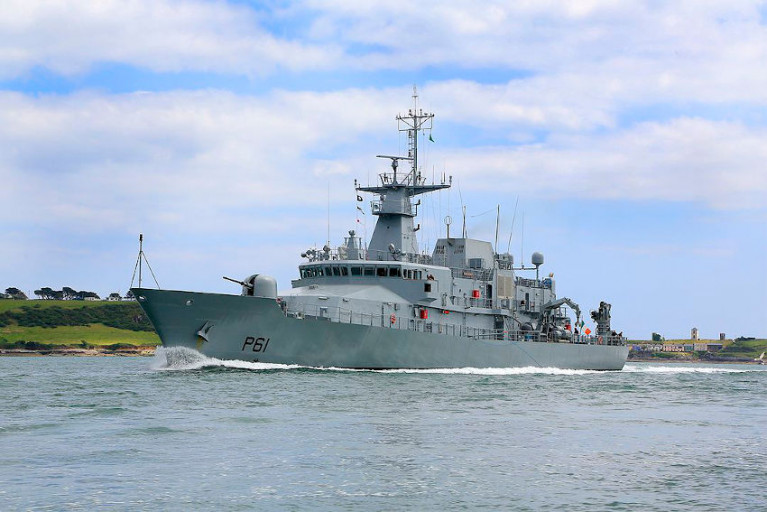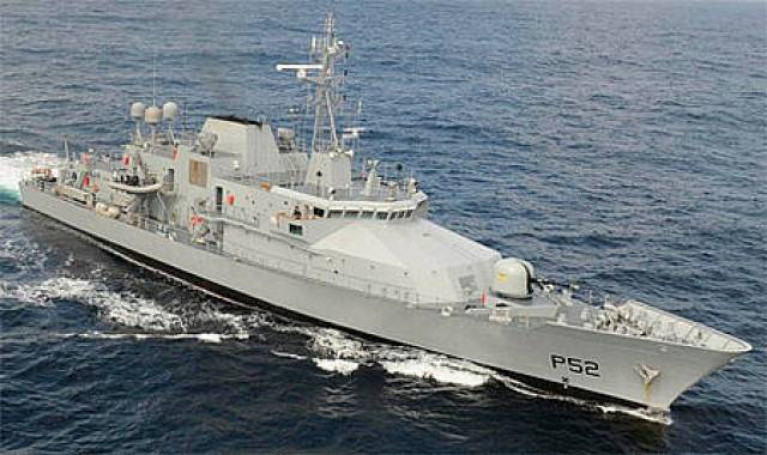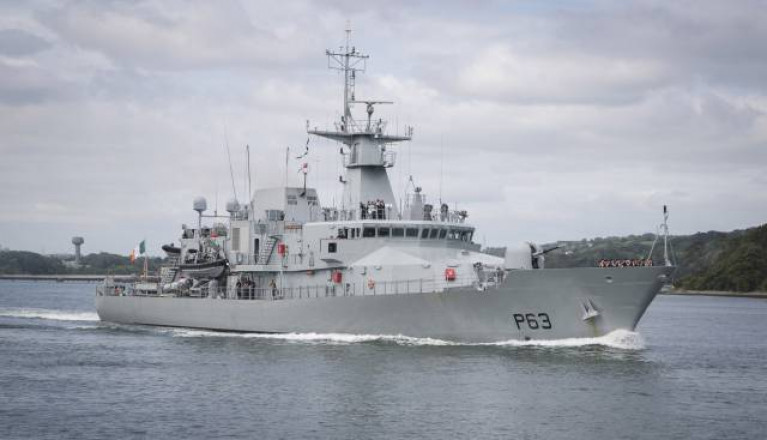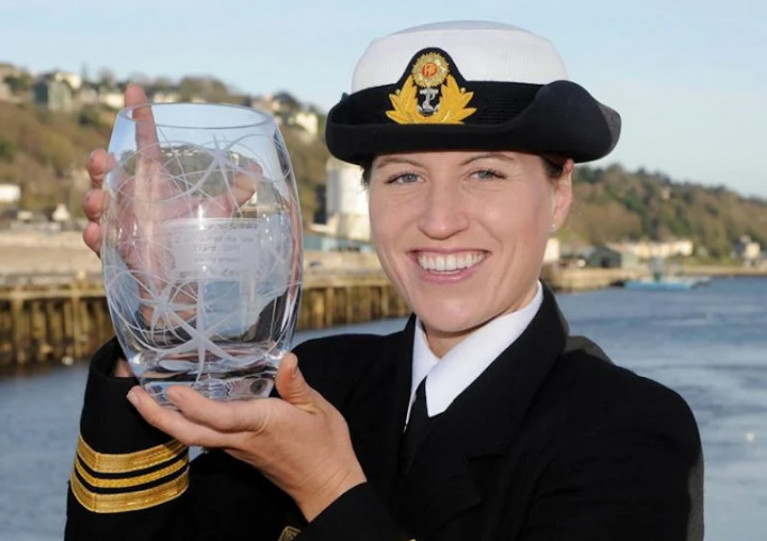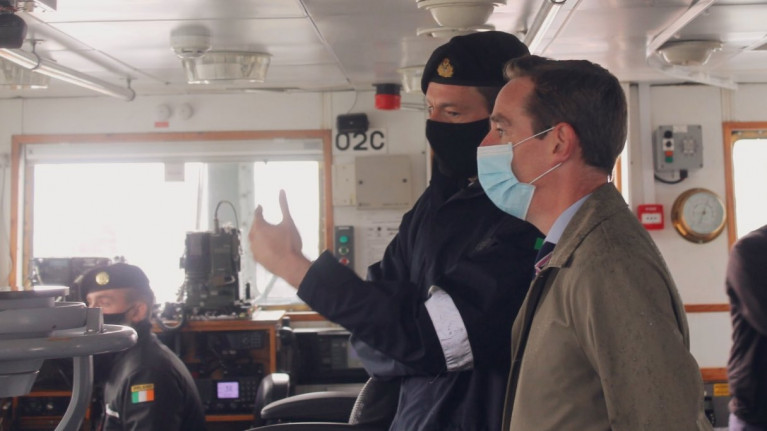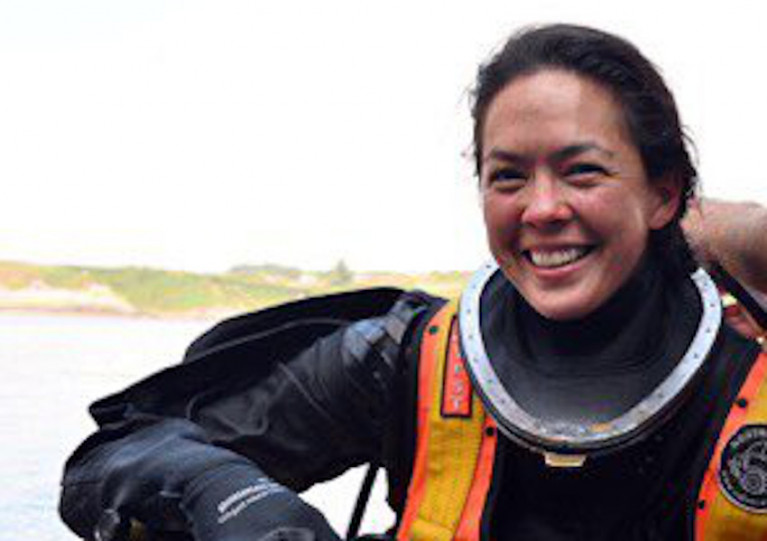Displaying items by tag: naval service
Procurement of New Multirole Vessel for Naval Service Still In Works, Minister Confirms
The process to appoint a marine adviser to support the procurement of a new multirole vessel for the Naval Service is under way and “should be finalised within the coming weeks”.
That was the response from Minister of State Frank Feighan, on behalf of Defence Minister Simon Coveney, to a Commencement Matter from Senator Victor Boyhan on Monday (12 July) requesting an update on plans to acquire the new MRV, following reports that the tender process was no longer going ahead.
Senator Boyhan highlighted such a vessel’s importance in terms of Ireland’s fisheries protection capabilities, which were deemed “unsatisfactory” by a recent European Commission inquiry, according to The Irish Times.
 Senator Victor Boyhan
Senator Victor Boyhan
Serious staffing issues recently caused the Naval Service to rely on the assistance of an EU vessel in patrolling Ireland’s waters, as previously reported on Afloat.ie.
Addressing these matters, Senator Boyhan said: “I am asking that we have the necessary ships and specialist equipment, and the motivated staff to address issues around fisheries protection, which are critically important. We also need to find out where we are on this project. Is it on course as the draft tender documents set out?
“It is important infrastructure that is needed. It would give the Naval Service a boost and a sense that we are all on the one page. It is important that we have absolute clarity about where we are on this important project.”
On the point of the multirole vessel, which is intended to replace the flagship LÉ Eithne, Minister Feighan confirmed that “a joint civil-military project team has been appointed to manage this project. Work to date has focused on the pretender concept of operations stage and preparing a detailed specification of capability requirements for a tender competition.
“In addition, a competition is under way to appoint a marine adviser to support the procurement of a multirole vessel. This process should be finalised within the coming weeks.”
He added that a public tender competition would be held in due course to cover the supply of the multirole vessel “subject to availability of funding within the overall defence capital funding envelope”.
In response to issues around fisheries patrols, Minister Feighan said “the Minister [or Defence] is satisfied that the Sea-Fisheries Protection Authority and Naval Service continue to actively engage with the Commission and EU partners on matters related to the Common Fisheries Policy.”
He added: “The Government acknowledges the challenges in the Naval Service in terms of recruitment and retention and the impact this has on planned fishery protection patrol days at present. The minister’s focus is on returning the Naval Service to its full capacity.”
The full debate is available to read on KildareStreet.com
After carrying out a high level of data and positional data analysis, the Naval Service has detained the Spanish fishing trawler involved in an incident with a Castletownbere trawler in Bantry Bay last Friday.
As Afloat reported earlier, the LÉ Roisin detained the Punta Candierira approximately 95 Nautical Miles South of Mizen Head for alleged breaches of fishing regulations and is escorting it to Cobh.
The Spanish-registered vessel was at the centre of an incident within the Irish 12-mile limit in Bantry Bay on Friday morning when the Castletownbere trawler, Lours de Mer, alleged that it attempted to ram the Irish vessel to force it away from fishing grounds.
The Irish South and West Fish Producers' Organisation described the incident as "dangerous intimidation" and called for the Spanish boat to be arrested.
Castletownbere Skipper Kieran Sheehan said that the Spanish Skipper was "aggressive" and was "doing circles around us."
The Castletownbere trawler claimed that the Spanish gill-netter vessel was long-line fishing inside the 12-mile limit and cut its gear to get outside the 12-mile limit before the Navy got to the scene.
The Naval Service said it conducted a search of the area but did not find any fishing gear.
The Sea Fisheries Protection Authority said the Spanish vessel was "operating" within the Irish 12-mile limit.
Spanish vessels do not have rights to fish there.
The Naval Service said that they "had to contact a high level of data and positional data analysis" in the case which resulted in the detention.
This is the fifth vessel detained by the Naval Service in 2021.
The Naval Service, the maritime component of the Defence Forces with a support base and headquarters located in the Naval Base, Haulbowline, Co.Cork is seeking applications for a variety of roles in the service according to the latest adverts on public jobs.ie.
Applicants are required to fill engineering, chef, carpenter and electrical roles.
As Afloat reported recently, there has been a mass exodus of personnel from the Service.
The Service is now accepting applications for the positions where successful candidates – after full military and on the job training – become an integral part of the maintenance team providing technical support onboard a fleet of nine ships.
Applicants must be 18 years of age and under 27 years of age on the date of application.
Check out the jobs here
Africa Needs Ireland’s & Europe’s Help to Tackle Transatlantic Drug Trade, Says Anti-Smuggling Chief
Ireland has a “vested interest” in joining fellow EU nations and shoring up support to combat the transatlantic drug trade in West Africa.
That’s the message from the head of the EU’s anti-smuggling agency MAOC, who has been outspoken about drug cartels’ use of ‘narco-subs’ to skirt under the gaze of traditional patrol efforts.
As previously reported on Afloat.ie, Michael O’Sullivan said the discovery of these semi-submersible vessels points to an even greater security threat to the world.
More recently, an article co-authored by O’Sullivan and Naval Service commander Cathal Power has been published in the 2020 Defence Forces Review which outlines the dangers involved, and the outsized burden placed on less wealthy African nations to deal with these threats.
As The Irish Times reports, it calls for Ireland to step up alongside other European nations and commit resources to bolster maritime policing efforts in Cape Verde — the West African islands at one end of the nightly trafficked shipping route known as Highway 10.
“Now is the time for Ireland to join our European partner nations in a more overt, forward presence in the southern part of the North Atlantic,” they write. “The removal of drugs upstream, in bulk, would have an immensely positive impact on European and Irish society.”
The Irish Times has more on the story HERE.
Navy to Carry Out Investigation Over Fire On Board L E Niamh
The Naval Service is carrying out an internal investigation into the fire on board the LÉ Niamh moored alongside Cork Dockyard at Rushbrooke in Cork Harbour which occurred on Saturday.
As Afloat reported earlier, Fire service Units from Cobh, Midleton, and Cork City were called.
Defence Forces Press Office said no injuries to naval service personnel or Cork Dockyard staff.
"While a full investigation into the cause of the fire will be conducted, it is thought to have started in a stores compartment adjacent to where cutting work was being carried out by engineers," the spokesperson said."The ships Duty Watch responded to the alarm and carried out firefighting to contain the fire and prevent any spread.
Blaze On Naval Service’s LÉ Niamh Brought Under Control
Independent.ie reports that a fire which broke out on a Naval Service vessel in Cork Harbour has been brought under control — but the scale of the damage could be significant.
It’s understood that the accidental blaze started in a storage compartment of the patrol vessel LÉ Niamh, which is moored alongside Cork Dockyard at Rushbrooke, shortly before lunchtime today, Saturday 3 October.
Fire brigade units from Cork city and county attended the incident, which was also handed by Navy firefighters. No injuries have been reported.
French-Registered Fishing Vessel Detained by Naval Service off Blasket Islands
A French-registered fishing vessel has been detained by the Naval Service off the south-west coast.
The LÉ William Butler Yeats (P63) detained the vessel for alleged breaches of fishing regulations after a boarding inspection approximately 11 nautical miles south-west of the Blasket Islands.
The vessel is being escorted to Dingle, Co Kerry, where it will be handed over the Garda, the Defence Forces press office said.
This is the eleventh vessel detained by the Naval Service in 2020.
Woman Promoted To Commander In First For Naval Service
Roberta O’Brien was one of the first women to enter the Naval Service when she joined as a cadet in 1995.
Then in 2008 she broke the glass ceiling by becoming the first female captain of a navy patrol vessel, the LÉ Aisling.
Now the ceiling is shattered even further as the 25-year veteran has made history as the Naval Service’s first woman to attain the rank of commander, as the Irish Examiner reports.
The move comes just weeks after Sub-Lieutenant Tahlia Britton became the first woman to join the ranks of the Naval Service’s elite diving unit, as previously reported on Afloat.ie.
And the now Commander O’Brien hopes that her promotion will be a signal that a career at the highest ranks of the Naval Service is achievable to women.
The Irish Examiner has more on the story HERE.
Ryan Tubridy was a guest of the Irish Naval Service yesterday having taken a private tour and coastal trip onboard LÉ Ciara from Dun Laoghaire Harbour into Dublin Bay before the onset of Storm Ellen, writes Jehan Ashmore.
The broadcaster of the Ryan Tubridy Show on RTE Radio 1, spoke on his programme this morning following his naval tour-trip, citing a limited knowledge of nautical terms. This was clearly demonstrated when boarding LÉ Ciara in Dun Laoghaire Harbour where he mentioned 'boat' but the crew corrected him with a reply of 'ship'.
Despite the introductory slip-up, Ryan was clearly impressed of the work involved in the Naval Service as crew of the LÉ Ciara gave him an insightful tour. This included the bridge, mess-room and the galley, where the menu is constantly changing, given the variety is all too important to keep a crew of 39 (including 5 Officers) content while working at sea.
Among the equipment highlighted on the bridge, was the satelitte tracking of ships represented by 'lights' as Tubridy refered to, however the distinct absence of such notably off the south-west coast was due to Storm Ellen, which kept fishing vessels decidely away from such dangerous seas.
It was during yesterday morning that Afloat routinely tracked online shipping, among them LÉ Ciara to Dun Laoghaire Harbour and by concidence this took place shortly before listening to the Tubridy Show discussing the pending invite from the Naval Service.
Prior to this, LÉ Ciara had sailed from Cork Harbour to Dun Laoghaire Harbour where the radio presenter (to grace TV screens in September with RTE's flagship 'Late Late Show') was taken out on a short coastal trip into Dublin Bay. This included a transit through Dalkey Sound which took place before noon which then led the Coastal Patrol Vessel (CPV) return to Dun Laoghaire Harbour having rounded Dalkey Island.
It was in these same waters where Afloat reported last week, a rockfall incident within Coliemore Harbour, Dalkey which forced the temporary closure of the passenger ferryboat service to the island 300m offshore. This remains so also given the tail end of Storm Ellen.
As for LÉ Ciara, the sleek CPV has been in the Naval Service for more than 30 years, following an initial career albeit brief of just 4 years with the UK Royal Navy's Hong Kong Patrol Squadron before its Irish role where the ship was not the only ship in Dun Laoghaire Harbour yesterday as outlined below.
Firstly though was the excursion vessel, St. Bridget of Dublin Bay Cruises that was berthed ahead of LÉ Ciara while routinely alongside St. Michael's Pier, though given the increasingly inclement weather not surprisingly no cruises took place among them around Dalkey Island. The bad weather led St. Bridget yesterday afternoon make a 'repositioning' short passage across Dublin Bay to take a berth in the capital port next to the tug, Giano as Afloat has also reported.
While back in Dun Laoghaire Harbour the homeport of ILV Granuaile which berthed at Carlisle Pier and where nearby the Commissioners of Irish Lights operate the tender from their headquarters located beside the port's marina. Asides leisure craft and yachts is the former Dutch barge Stella at the 'Coal' Harbour and a former UK based Thames lighter tug, Swiftstone which is undergoing restoration as a 'heritage' tug.
The UK connection continues as L.É. Ciara was formerly a Royal Navy vessel HMS Swallow stationed in the waters of Hong Kong as part of a coastal patrol squadron based at the former colony. The 62m vessel which has a shallow draft of 2.7m, was acquired by the Irish Government in 1988 and the CPV celebrated more than three decades in service as Afloat previously highlighted in recent years.
L.É. Ciara's primary armament consists of a 76mm OTO Melara compact gun mounted at the fo'c'sle near the bow in addition a Canon Radamec Fire Control System. As for service speed is given as 25 knots but can be more.
Following the media-naval rendez-vous, Afloat observed the L.É. Ciara re-enter Dublin Bay yesterday as the CPV at almost 14.15 was offshore of The Muglins where a lightbeacon is located on the rocky islet to the east of Dalkey Island. For more on local coastal matters, see: 'Maritime' Dalkey series (2011-2016) published in the Dalkey Community Council Newsletters.
According to online tracking, L.É. Ciara headed back to its homeport of Cork Harbour as Storm Ellen progressed, though the CPV arrived just before 2300hrs last night where the small ship remains at anchorage.
Donegal Woman Makes History As Naval Service’s First Female Diver
A gunnery officer from Donegal has become the first female diver in the history of Ireland’s Naval Service, as RTÉ News reports.
Sub-Lieutenant Tahlia Britton received her diving log book along with two other newly qualified divers in a ceremony at Haulbowline yesterday, Friday 14 August.
It came after all three had graduated from an 11-week course noted for its difficulty and high attrition rate — and now they will become part of the Naval Service’s elite diving service.
RTÉ News has more on the story HERE.
Congratulations to the members of the 3rd Combined #Diving Course who successfully completed 11 weeks of intense #training earlier today. Having received their initial qualification, the 3 new #military #divers will now undergo a further 5 week mixed gas course. Bravo Zulu ?? pic.twitter.com/naN76mJw7E
— Irish Naval Service (@naval_service) August 14, 2020


























